Michael Walters
Notes from the peninsula
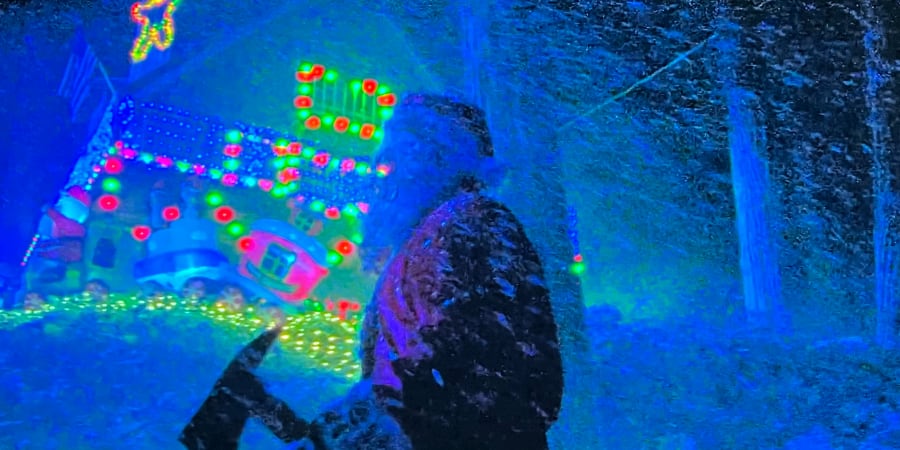
Director: Joe Begos
Release year: 2022
A grimy, low budget, fun-but-annoying mashup of Terminator, every sleazy slasher ever, a hangout movie, Texas Chain Saw Massacre and… First Blood? I don’t want to criticise too hard because it’s clearly a labour love made with no money and some ingenious effects to bridge the funding gap.
Tori runs a record/video store in a small Californian town. It’s Christmas Eve, it’s snowing, and she has a Tinder date lined up. Her clerk employee Robbie convinces her to spend the night getting drunk with him instead. Neither of them have accounted for the malfunctioning military-grade RoboSanta that is at the local toy store, and when they meet friends there after hours for a festive drink, the robot sets its sights on killing them all.
The first thirty minutes is an improvised hangout movie, and the banter between Tori and Robbie, which is natural and fun to a point, tips into annoying and expletive-laden posturing, so that when the killer RoboSanta arrives it’s a relief they stop talking. An unexpectedly disturbing sequence where the couple have sex while the robot slaughters the family next door, with the edit cutting back and forth, is a particularly odd choice.
There’s a police ex-boyfriend, a joke about pegging, real explosions, Tori screams a great deal, the robot just won’t die, etc, etc. It was clearly made with a ton of love and enthusiasm and about $10,000.
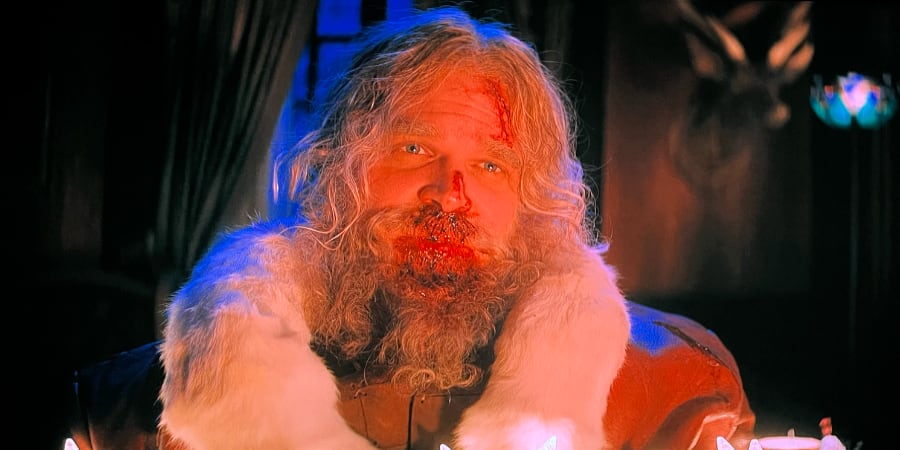
Violent Night
Director: Timmy Wirkola
Release year: 2022
Santa Claus is drunk in a bar, despairing of children’s greed, and thinking about giving it all up. While delivering presents to a rural mansion, he interrupts a robbery, and to save good girl Trudy he has to call on his skills as a Viking warrior.
You can imagine the pitch—Die Hard meets Home Alone with Santa—and it plays out exactly like that. There are some outstanding fight scenes between Santa and the mercenary military home invaders, but the first half is a struggle because it’s not as amusing as it thinks it is, the characters are annoying, and you just want to see Father Christmas fight people. Once he gets his sledgehammer, it becomes far more fun.
It’s exceptionally violent. There’s a sequence where the girl, Trudy, hides in the attic and sets a series of Home Alone traps, and the ensuing mutilations are grim and hilarious. There’s a heart of gold beneath the broken jaws, cracked limbs and decorations in eyeballs, I just wish it was twenty minutes shorter.
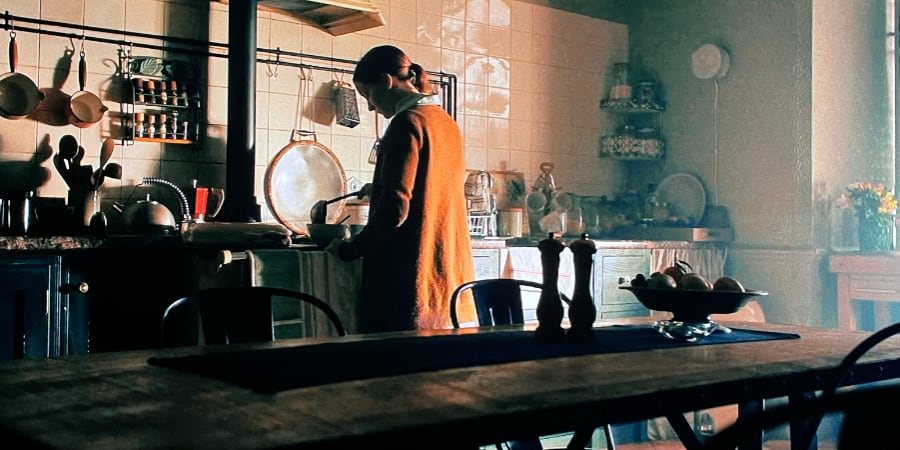
Saint Maud
Director: Rose Glass
Release year: 2019
Maud, a private nurse from a care agency, starts a new job looking after acclaimed dancer Amanda who has Stage 4 cancer and is close to death. Amanda still lives a hedonistic, drama-filled life which clashes with Maud’s newfound faith. When Amanda affectionately calls Maud her saviour, Maud takes this as a sign to try and save Amanda’s soul.
This is writer and director Rose Glass’s first film, and with cinematographer Ben Fordesman, she makes Scarborough, which is not far from where I live, shine with a (forgive me) religious light. Morfydd Clark’s Maud is a terrible delight, oscillating between a lost, unsure woman with a troubled past and determined follower of the voices in her head. It’s disturbing to see reality flex under Maud’s psychosis.
Amanda is a fascinating figure, bored with dying, used to a far more social and exciting life, and stuck up in a big house on the cliffs. She’s already halfway to heaven, but Maud can’t let her be, confused by Amanda’s sexuality when she has her own orgasmic relationship with God, and convinced she needs saving from damnation before she dies. Amanda calls out Maud’s meddling in front of friends at a birthday party—her scorn comes back to bite her.
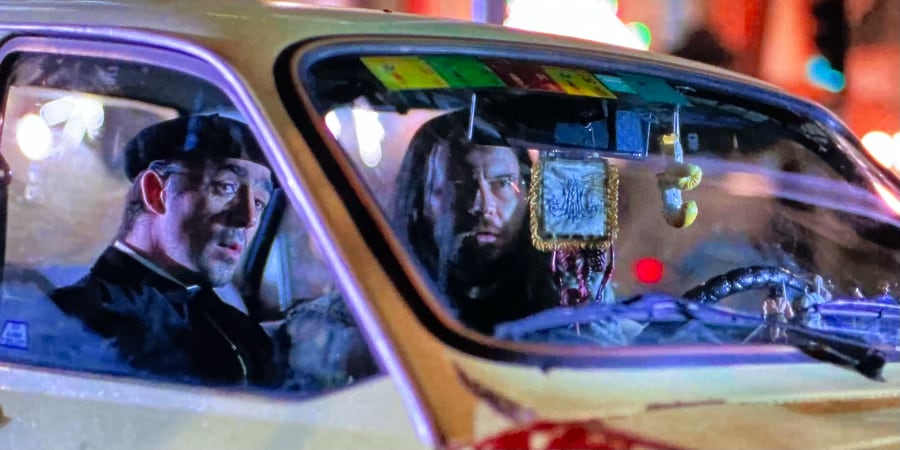
The Day of the Beast
Director: Álex de la Iglesia
Release year: 1995
The first real Christmas movie of my #31DayofBlackXmas, it’s a real horror comedy to repair the damage of Polanski’s vampire farce. A priest thinks he has solved the puzzle of when the Antichrist will be born, and goes to Madrid to stop it which involves giving his soul to the devil.
The genius of this film is that it’s funny, but not too funny, and grim to just the right level, and director Álex de la Iglesia shoots with a strong streak of Almodóvar. The dialogue is sharp, the action anarchic, the horror served reverently even when surrounded by comic actors.
The threesome of the priest, record shop metal head and conman Satanist makes for surreal, violent fun. To sell his soul, the priest has to do evil deeds, and do them he does. There are a couple of moments of true devilish horror scattered throughout, including the devil as a horrific goat, and a homeless man being burnt alive as a symbol of the coming apocalypse. Surprisingly excellent.
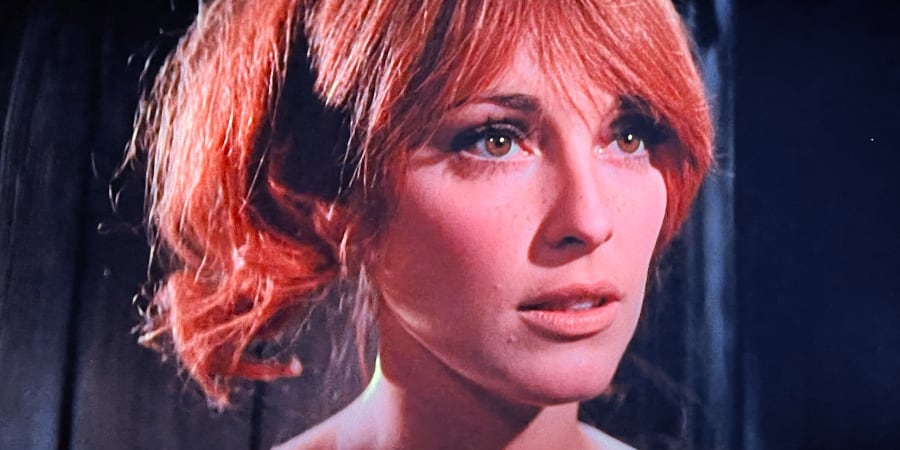
Director: Roman Polanski
Release year: 1967
I wanted something light. I remembered not enjoying this a few years back but loving it as a kid, so I gave it another go. It’s a farce based on a mixture of Hammer horror and Universal Monsters. Roman Polanski directed such amazing films in this period, but this is still disappointing on second watch.
The set design and consumes are wonderful. Watching these shallow comedic characters flap around is made more bearable when the locations look so exquisite. Sharon Tate is luminous, some of which is because we know her fate not long after this was made, but also she shows great comic timing in her role as the captured daughter of the innkeeper our intrepid non-heroes are staying with.
It’s the pacing that kills it. There’s not much story because it’s a pastiche, deliberately similar to all that’s come before. The characters spend too much time running around the beautiful sets and being too goofy for my taste. I did enjoy the arrival at the inn after recently watching Peter Cushing’s Van Helsing rock up at the original in Terence Fisher’s Dracula.
This is broad, obvious slapstick comedy with strong Jewish roots. The actors seem to be having fun, but I didn’t find it funny, which is a killer blow for a comedy. I did admire lots of the camera work and character comedic details though. It was more enjoyable than last time, I’ll give it that.
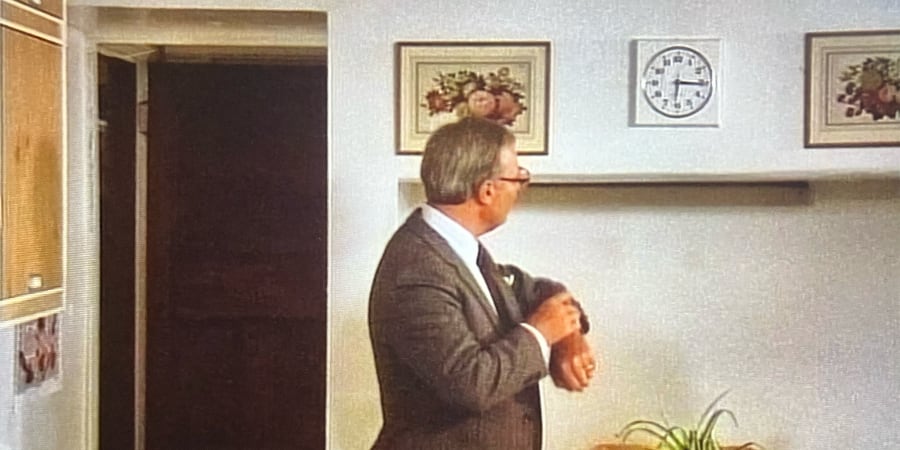
The Appointment
Director: Lindsey C. Vickers
Release year: 1982
Ian and Dianna live a comfortable existence with their daughter Joanne in a rural English town. The local wood has been fenced off to stop schoolchildren walking through it after a girl was murdered in it three years before. Ian has to tell Joanne that he’ll miss her big musical recital because his company is sending him away the next day for an urgent meeting, triggering a night of anxious dreams and possible premonitions.
The opening five minutes are properly disturbing as we follow a schoolgirl on a path through some woods after we’ve heard words from a police report describing her death. The way she’s pulled into the trees by an unseen force is terrifying and looks amazing, even on such a low budget in 1982. Joanne regularly talks to someone through the fence sealing the wood after school, and it’s unclear if it’s the ghost of the dead schoolgirl or something else.
Joanne isn’t just a daddy’s girl, her relationship with her father is uncomfortably intense, which he brushes off to his wife, but she is clearly bothered by. Joanne is fourteen and seems to always get what she wants from Ian, and in an angry scene Dianna tells him that their family is out of balance and Joanne has created for herself a dangerously delusional world. Ian seems perplexed and disbelieving, but it could also be interpreted that there’s something sexual between him and his daughter, and he has certainly mixed his daughter with his wife unconsciously, and Dianna’s picked up on it.
All of which gives the second half of the film it’s bite. Whatever is in the woods, through Joanne, attacks Ian through woozy dreams and nightmares that blur with their nightly reality. As Ian sets off on his long trip away from his family, the ending seems inevitable. This is a film about minding boundaries. If you don’t, whatever is in the woods will get you.
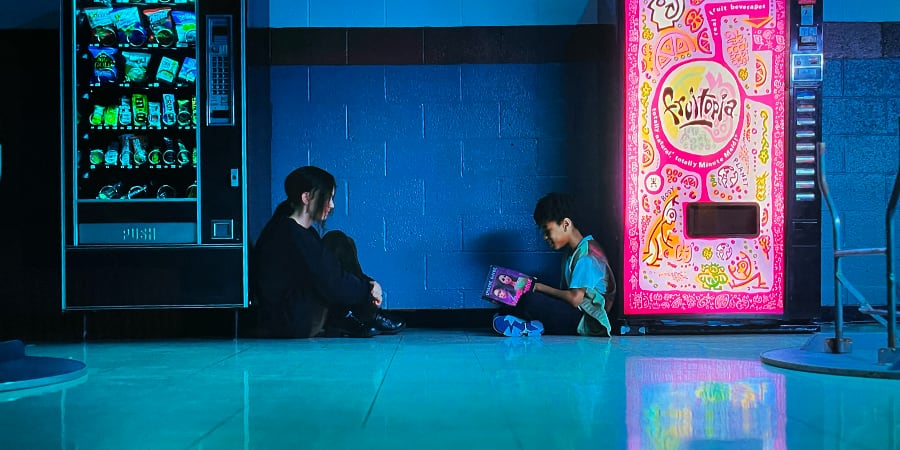
I Saw the TV Glow
Director: Jane Schoenbrun
Release year: 2024
Nostalgia is both comforting and soul crushing. Owen bonds with Maddy over a TV show she’s obsessed with, The Pink Opaque. Maddy is miserable in her life, and decides to run away from home, giving Owen a choice that will affect the rest of his life.
Owen is suffocated at home by a father he’s terrified of. His mother is protective but terminally ill. In Maddy, he finds a kindred spirit, someone who understands him and will leave him videotapes at school when his father won’t let him stay up to watch his new favourite show. Owen is full of confusion and self-doubt over his sexuality. Watching The Pink Opaque, as dark and insidious as it is, he feels safe.
The Pink Opaque is about two friends, Tara and Isabel, who share a psychic connection with each other, have pink ghosts tattooed on their necks, and are in a good-versus-evil battle with a moon-faced Mr Melancholy. It’s a queer allegory, a trans allegory, and also an allegory for anyone who’s felt constricted and denied by the adult/capitalist/religious world.
Both Owen and Maddy work long hours in poorly paid jobs that snuff out their teenage playfulness and curiosity. Only Maddy finds an escape route, and it’s not clear how real even that is. Owen’s final call for help, a scream of agony and despair, is zipped up and apologised for. It’s not enough to keep our real life alive on the inside. We all need help in being real on the outside too.
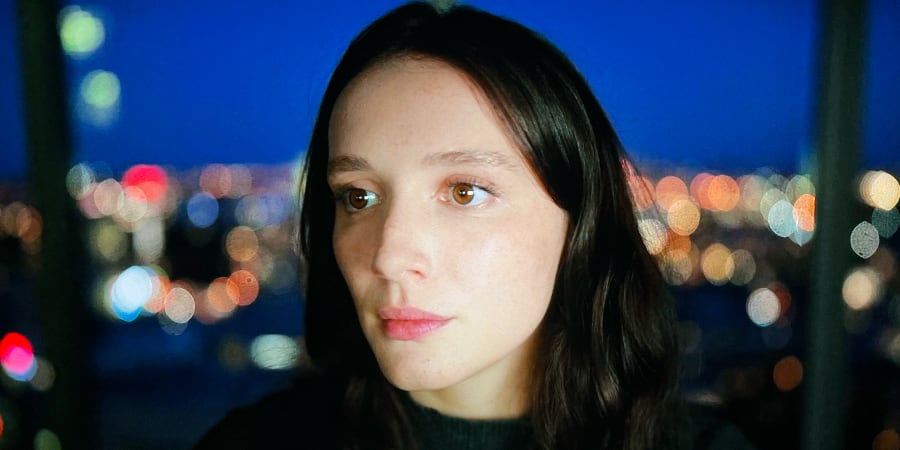
Red Rooms
Director: Pascal Plante
Release year: 2024
Kelly-Anne turns up every day at the trial of a high profile alleged serial killer who is charged with broadcasting on the dark web the torture and murder of three teenage girls. She meets a groupie of the suspect who believes he is innocent, but Kelly-Anne’s motives remain elusive.
Having a main character who lacks empathy is a tricky thing to pull off, but director Pascal Plante and actress Juliette Gariépy do an incredible job of keeping us involved in her unclear quest and guessing at her motivations. She has the mannerisms of someone who might be on the autistic spectrum, and she’s a loner, seemingly a hacker, who loves to take controlled risks. Her sense of morality is different to those around her.
It’s a film about living online today, making a living with software, trading in bitcoin, using the information about us online to hack our emails and our homes. It’s about desensitisation to violence, our cultural love of true crime and serial killers, how our media covers trials, the trauma we carry with us from childhood, and the trauma that can be inflicted on us by the attentions of a psychopath. I couldn’t recommend this film more.
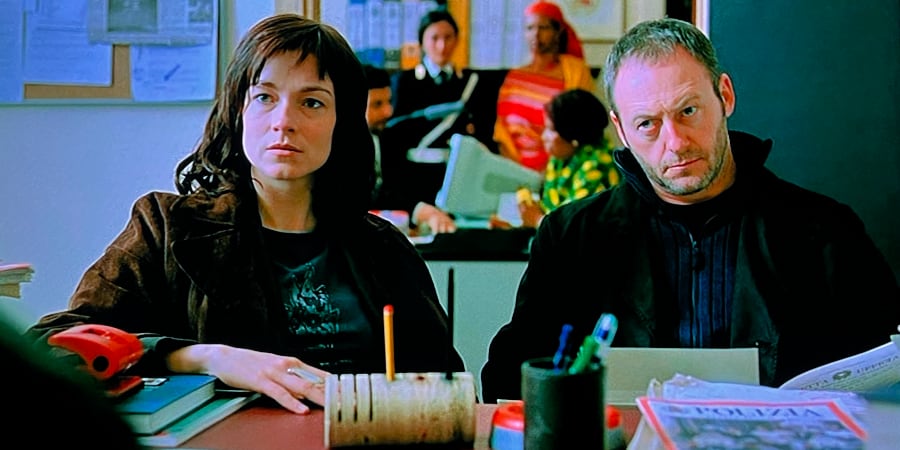
The Card Player
Director: Dario Argento
Release year: 2004
Rome detective Anna Mari pairs up with rogue Irish cop John Brennan to find a gambling serial killer who challenges the police to games of online poker to save the lives of kidnapped women. Twists and turns (but not that many) ensue.
Some people seem to hate that the poker game in this hasn’t aged well graphically, but I prefer to think of how much it would cost a director today to replicate a period technological thriller set in 2003 and just enjoy it for the time it’s set in. It’s an odd film, though. Brennan starts the film as an aggressive idiot and never really becomes believably likeable as the love interest for Mari.
There’s one outstanding set piece in Mari’s apartment where the killer breaks in to kidnap her, but apart from that there’s not much here to make it stand out from most procedural serial killer thrillers. It’s dramatically empty—we just lurch from one game of online poker (on Windows 2000!) to another.
This might be the most disappointing Argento so far. Say what you like about his The Phantom of the Opera, but it tries for something new.
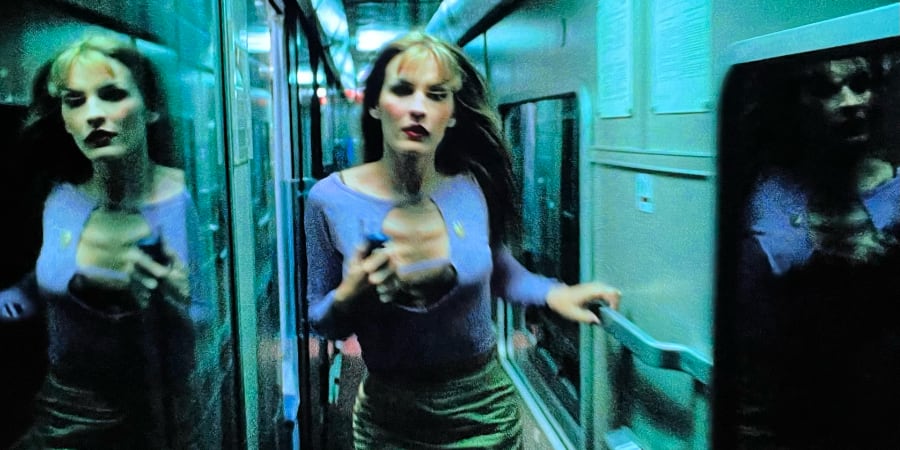
Sleepless
Director: Dario Argento
Release year: 2001
Young Giacomo watches a hidden figure stab his mother to death with a flute. Police Chief Moretti promises the boy he will catch the killer, and he does, but seventeen years later the killings begin again. The retired Moretti teams up with adult Giacomo to catch the Dwarf Killer who seems to be back from the dead.
Doesn’t that sound like the most Argento film ever? And it’s good! It doesn’t match the pizazz of his seventies giallo films, and it’s too long, but it has many other charms, especially the opening murder on the Italian night train. Argento is always looking for the interesting shot, the killings are imaginative and brutal, the Goblin score is great, and Max von Sydow as the elderly, forgetful Moretti brings an unexpected class and lightness of touch to the otherwise pitch black story.
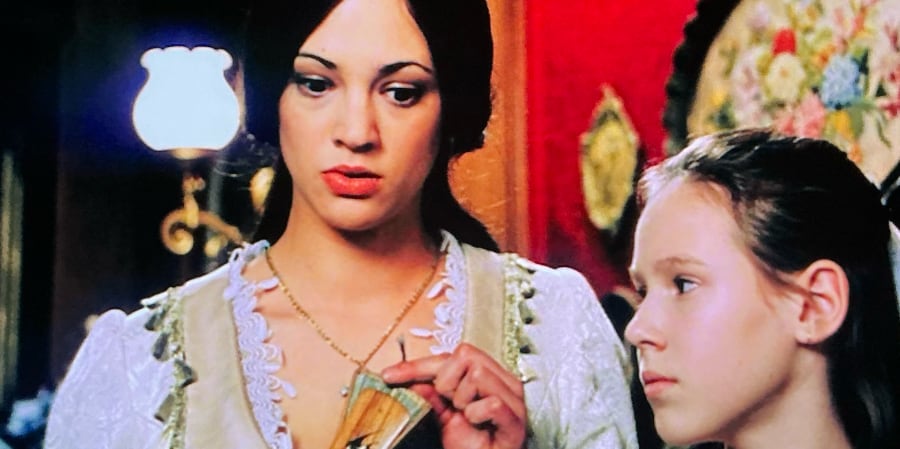
The Phantom of the Opera
Director: Dario Argento
Release year: 1998
After Hammer’s Dracula and Ken Russell’s Frankenstein origin story, The Phantom of the Opera was an accidentally perfect pick—another turn of the century literary adaptation, another Universal Monster, and the next film in my parallel project to watch all the films of Dario Argento in chronological order.
Looking for films for #31DaysofBlackXmas, it seemed wrong not to continue the Dario Argento quest I started back in June. That stalled because the films got harder to find, and frankly I was getting bored. Argento’s The Phantom of the Opera is only available on a DVD rip of what looks like a VHS (the quality is awful, which colours everything), but it wasn’t expensive, and I didn’t want to let go of the idea without another try.
A baby is put in a basket and released into the sewer. A rat spots it, pulls it to safety, and the rats raise the child as one of their own. This makes Argento’s Phantom the king of the rats when the story starts, but also a hunky blonde stud, played by Julian Sands as beautiful, charming, and with no mask in sight. The Christine he is entranced by is (of course) Argento’s daughter, Asia, caught between the good Baron, who woos her in conventional ways, and the dark Phantom, who can talk to her telepathically, kills people, and wants to keep her forever in his dank rat cave.
It took me a while to accept that Argento has made here a baroque mix of horror, romance and comedy, with some steampunk thrown in, and it was only the extended sequence of the rat-catcher careening through the caverns in a self-built rat vacuum-mincer where that hit home. If you’re looking for a straight horror, or a classic adaptation of the original novel, you’ll be disappointed, but if you’re able to look at this with an open mind (and find a copy of high enough quality to do the sets and costumes justice), then… you might think it works.
Looking back to his 1987 film Opera, the Phantom has always been in the back of Argento’s mind, and I wonder if it was a childhood favourite. He certainly loves theatrical spaces (like the opening of Deep Red). He’s made a long career from mysterious killers stalking artists. I wonder if there’s an interview where he talks about this? (Much scouring of the internet ensued, no evidence was found by the time this went to press.)
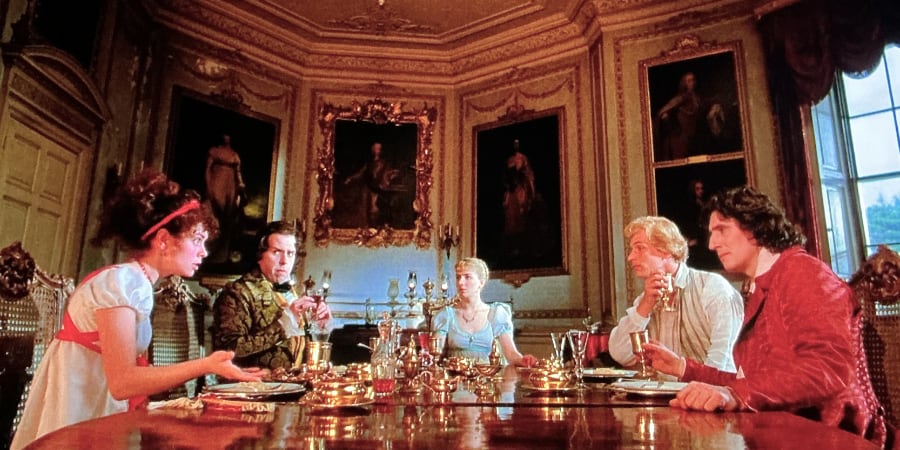
Gothic
Director: Ken Russell
Release year: 1986
Keeping things in the same vein (!), Gothic begins with famous poet Percy Shelley arriving at Villa Diodati on Lake Geneva to visit Lord Byron, with his bride-to-be Mary Godwin, and her stepsister Claire Clairmont. Byron’s physician Dr. John Polidori provides an endless supply of laudanum, sending these literary figures on a riotous, hallucination-filled journey through one stormy night that’s famed for being the source of some of our most famous fictional monsters.
Byron, Godwin, Shelley and Polidori whip each other into a fervour as a metaphor for the artists creative process and the courage required in the face of all the imagery and emotions that can fly around while making art. They bicker and fight and challenge each other in ever more excessive ways. I love Ken Russell. He’s not afraid to be weird, sexual, gloopy and violent.
His camera gets in the faces of the actors, and what actors he found: Julian Sands, Natacha Richardson, Gabriel Byrne, Timothy Spall, and a wondrous Myriam Cyr (here talking about working with Ken Russell who sounds like he was a bona fide genius). Cyr is a new name to me, and had a long career after this in theatre, writing and directing.
The script was written by Stephen Volk (here talking in depth about the history of the Frankenstein story and how he worked with Russell). Volk went on to write Ghostwatch and many other things for television, as well as novels and short stories. In that linked interview he talks about writing being done by aristocrats back in the day, the idle minds that didn’t have to work, and how we’re heading back to that today, with most writers not being able to make a living as writers, and film-makers having to be lucky enough to be supported by rich parents with houses in London.
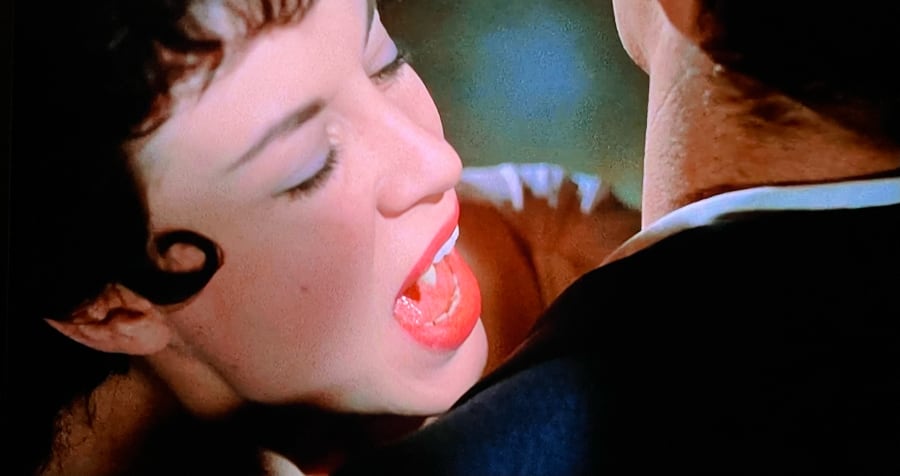
Dracula
Director: Terence Fisher
Release year: 1958
Christopher Lee’s Dracula is iconic. He’s tall, his face carries an animalistic quality when in vampire mode, he’s sometimes slow and imposing, but then he strides up castle stairs three at a time. Beneath his civility is a barely held in check hunger. It’s wonderful to watch. As critic Tim Stanley said, “Lee’s sensuality was subversive in that it hinted that women might quite like having their neck chewed on by a stud.”
Against this power you need a wily, intelligent Van Helsing, and Peter Cushing has those qualities in abundance. I definitely saw this growing up, but I didn’t remember much of it this time around. The finale, where Van Helsing jumps onto a table and runs at the curtains, was familiar, but that was at the very end. The scenes in the local inn are parodied in The Fearless Vampire Killer’s (a comedy that I don’t find funny) and probably many other places. The interiors are lush and colourful, and the clothes pleasing on the eye, which makes me wonder what sort of budgets Hammer was playing with at the end of the fifties.
Director Terence Fisher was clear that being bitten by a vampire was a sexual act. When Dracula closes the door of Mina’s bedroom, the last thing we see is her face looking lustfully and submissively up at her predator. This must have caused a stir in cinemas across the world in 1958, pre-dating Psycho and Peeping Tom, two more serial killers targeting young women and shocking social mores, by a couple of years.
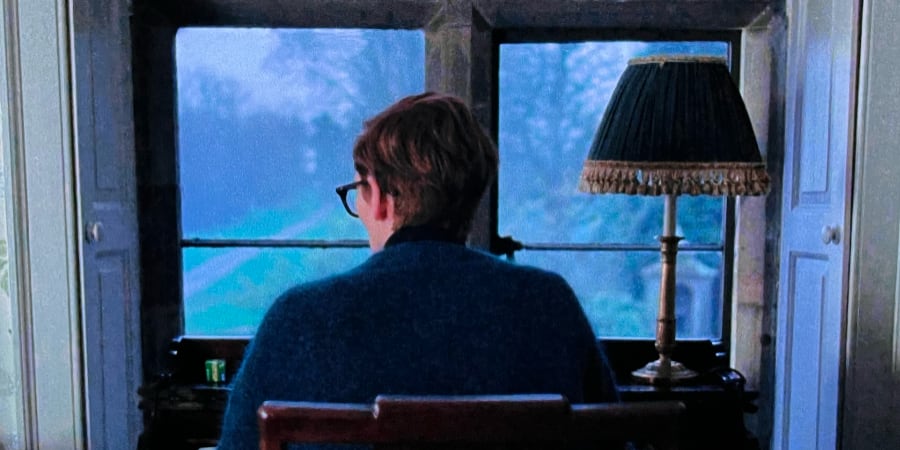
The Eternal Daughter
Director: Joanna Hogg
Release year: 2022
Julie, an artist and photographer, takes her mother to a luxurious country hotel for her birthday, but is unsettled by strange noises and half-seen figures. The hotel was once her mother’s family home, and the visit unearths unexpected memories.
Tilda Swinton plays both Julie and her mother, Rosalind, which took a while to get used to. I kept looking to see where the cutaway or stand-in was. Julie spends the whole film trying to make her mother happy, and her mother both appreciates the attention and is frustrated at her daughter being ‘a fusspot’. Julie is sacrificing other areas of her life to please her mother, but can’t ever get the resolution or reaction she needs to be able to relax. Her mother remains distant and elusive.
The setting is wonderful, and the supporting cast adds to the fun, especially the increasingly rude receptionist. It looked like director Joanna Hogg wanted bits to feel like a ghost story, but the potentially spooky scenes didn’t feel spooky at all. Hogg can’t help but make things about making things. As a drama and character study, it’s a moving piece of work, and the ending got me.
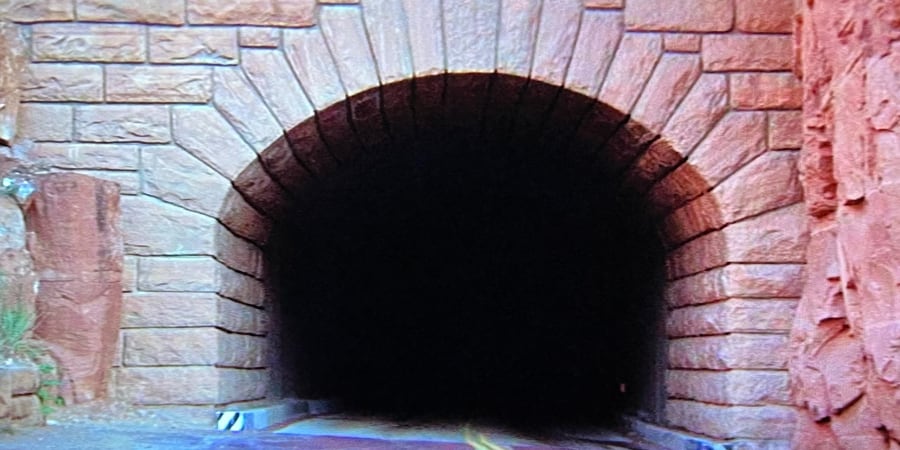
The Car
Director: Elliot Silverstein
Release year: 1977
Deputy Wade Parent is raising two daughters alone after the death of his wife and policing the usually peaceful small town of Santa Ynez. A black car with darkened windows drives out of the Utah desert and runs two cyclists off a bridge into a ravine. When the deaths start to mount and local suspects ruled out, Wade has to martial the town to stop the car from killing more innocent victims.
This was one of my favourites when I was a VHS kid, up there with Piranha as a repeat watch, another Jaws rip off. I’m surprised how much I cared for the people of Santa Ynez this time around. James Brolin and Kathleen Lloyd are bursting with charisma and easy chemistry, and the supporting cast give all the potentially stereotypical characters unexpected life, helped by the various relationships and backstories that a film like this doesn’t usually bother with.
It’s a town that sees it’s brightest and best mowed down by an evil car, and the grief of their loss is palpable. Once the killing starts, a surprising amount of time is spent with people grieving, which adds to the tension when the car does show up. The standout scene is when the car mysteriously appears in Wade’s garage and won’t let him leave. It’s a shark on desert roads with a knowing, malevolent streak.
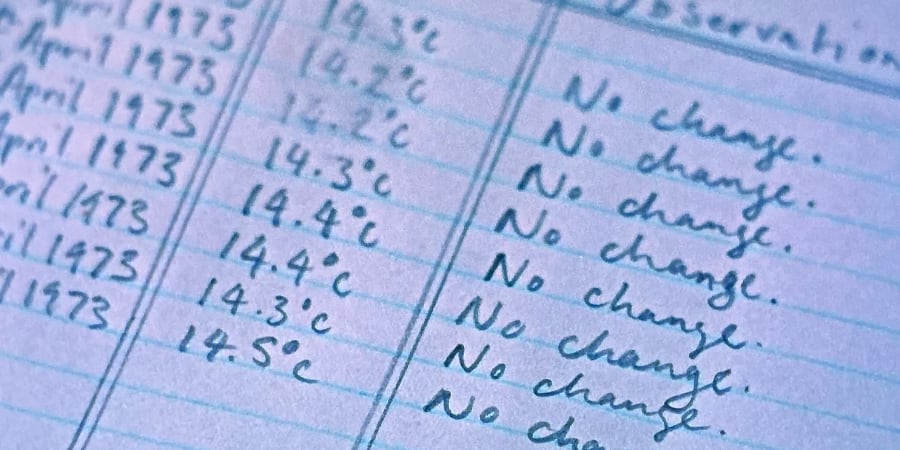
Enys Men
Director: Mark Jenkin
Release year: 2023
A woman in a bright red coat walks the barren landscape of an island somewhere off the coast of Cornwall. She’s a volunteer monitoring wildlife, in particular a clutch of white flowers of which she records the soil temperature at their roots every day.
It’s a life of strict routine—measure the soil temperature, drop a stone in the shaft of an old tin mine, make a cup of tea, record the details in a notebook. She’s alone, but she talks to a girl who she sometimes sees standing on the shed roof, and the old stone that stands against the horizon is sometimes closer than it should be, and there are children, women, miners in her dreams.
The landscape seems to press closer, and it begins to feel like the island is part of her, and time is playing tricks. A visiting boatman with supplies wears a yellow raincoat that she’s previously found washed up on the rocks. The radio speaks of the anniversary of an accident fifty years before, but the date is in the future of her written temperature log. The mystery mostly resolves itself but not completely, which is just the way I like it.
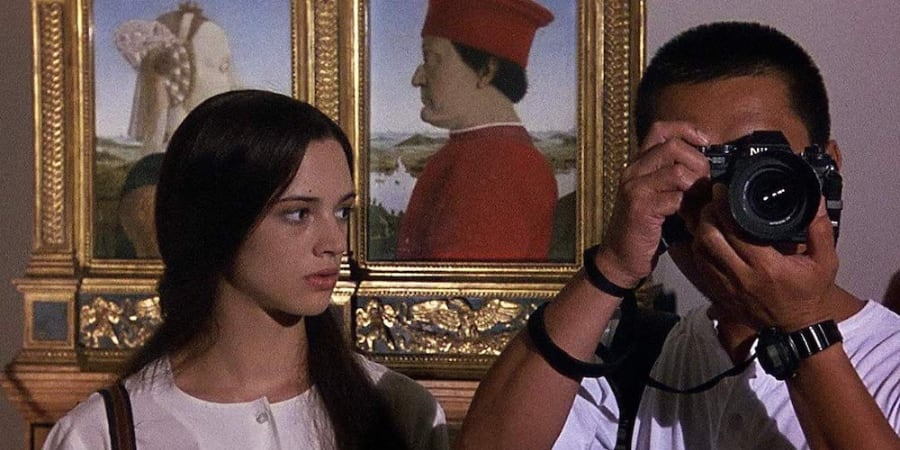
The Stendhal Syndrome
Director: Dario Argento
Release year: 1996
Imaginative and clichéd, intriguing and brutal, this film is primarily about rape, torture, and insanity. Asia Argento is Detective Anna Manni, sent from Rome to Florence on the trail of a serial killer and rapist. Anna collapses while visiting a gallery, overcome with hallucinations from the works of art. The killer steals her gun and uses it to capture and rape her when she returns to her hotel. Traumatised, Anna tries to continue to hunt Grossi, but her personality begins to change, and she loses her grip on reality.
It’s implied that the killer is also overwhelmed by art, although it’s not clear if he also has Stendhal Syndrome. Anna becomes more aggressive, and starts making her own art to process her trauma. Grossi kidnaps her and rapes her a second time, holding her in a cave covered in graffiti. Terrified of the hallucinations the graffiti brings on, something breaks in Anna, and the strength she finds both saves her and tips her into insanity.
Thomas Kretschmann as Grossi has something of Rutger Hauer about him with his confident killer’s persona and cropped blonde hair. At the halfway point the film switches to be more like Hitchcock, De Palma or late Paul Verhoeven. The blonde wig Anna starts to wear stretches credulity, and the twists and turns feel perfunctory towards the end. It’s a brave film, shocking, and Asia Argento is impressive in how hard she goes in the role. The film fizzes with ideas but doesn’t quite deliver.
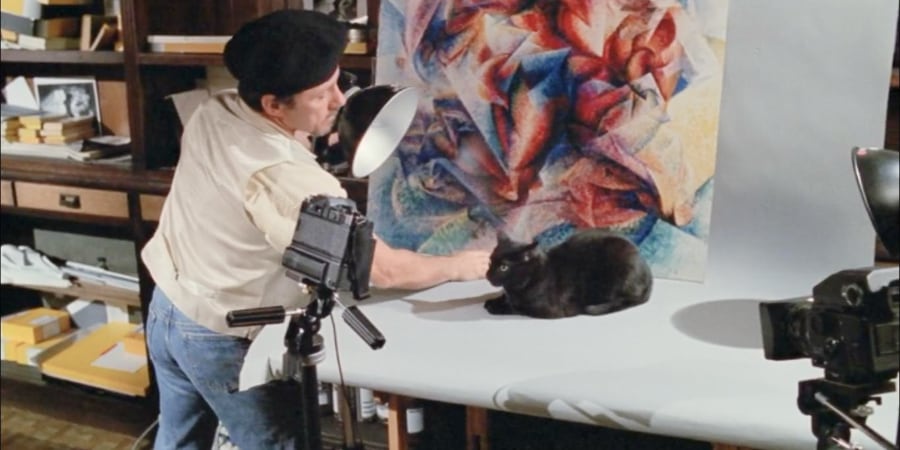
The Black Cat/Trauma
Director: Dario Argento
Release year: 1990/1993
These two odd kittens are making me wonder if my Argento project is reaching its end. The Black Cat is the second story in a double-hander, Two Evil Eyes, with George Romero. Both stories are adaptations of Edgar Allan Poe. Romero’s The Facts in the Case of Mr. Valdemar is a plodding melodrama with some fun performances, especially Adrienne Barbeau, and a strong ending. Argento goes for more of a character study in evil.
A deranged, beret-clad Harvey Keitel plays Roderick Usher, a photographer obsessed with taking pictures of mutilated bodies. When his girlfriend takes in a stray black cat, Usher takes an instant disliking to it and kills it to take its photograph. That night he dreams of a medieval village where his wife is the local witch. She knows what he has done. This is the first Argento film with creature effects, designed by Tom Savini, but they couldn’t save a flat story.
Trauma is a traditional Giallo, but in America. Teen runaway Aura enlists the help of David, a journalist, when she comes across a killer in the act of beheading someone in the grounds of her family home. David is following the serial killer, “The Head Hunter”, who only strikes when it’s raining and uses an electric-powered garrote to decapitate victims. Freudian high-jinx ensue.
Based on that description, I feel even more disappointed that it was such an unexpectedly tough watch. I can’t put my finger on what didn’t work, and it could be that I’m getting tired of the Giallo formula and need a break, or perhaps these aren’t as carefully crafted as earlier works. Nineties America doesn’t have the allure and exoticism of Rome or Zürich, it’s too familiar… I don’t know. I’ll try one more.
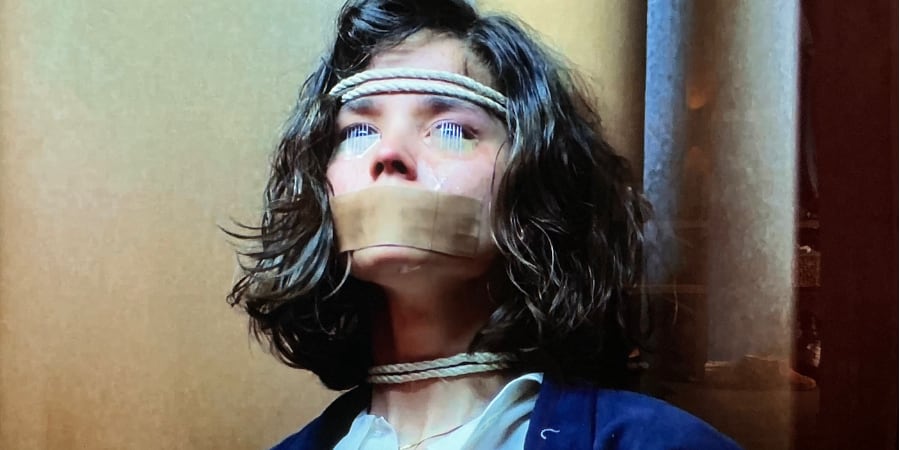
Opera
Director: Dario Argento
Release year: 1987
Opera is the last of what’s regarded as Argento’s unimpeachable run of giallo-horror-thrillers he made through the seventies and eighties. For me, there are hits and misses (Phenomena was not my bag), but Opera is one of his best.
Betty, understudy in a version of Verdi’s opera Lady Macbeth, makes a name for herself stepping into the lead role when the famous singer Mara Cecova is hit by a car. That night, a masked figure murders Betty’s boyfriend Stefano at his apartment, making her watch. Betty becomes suspicious of everyone, and as she is made to watch more killings, she must work out who to trust before it’s her turn to die.
The world of opera, with its costumes, mannequins, stage lighting and imposing architecture, is perfect for the heightened world of giallo’s black-gloved killers, secret passageways, uncertain allegiances and naked ambition. The soundtrack uses opera music, of course, but still has Argento’s trademark heavy metal. The deaths are violent and shown in explicit detail, and like Betty, we are made to watch.
Cristina Marsillach as Betty is perfect as the insecure, vulnerable, talented and resourceful Betty. There are plenty of playful cinematic touches on display, and using ravens from the opera’s avant-garde production as a central plot point is a supremely gothic touch.
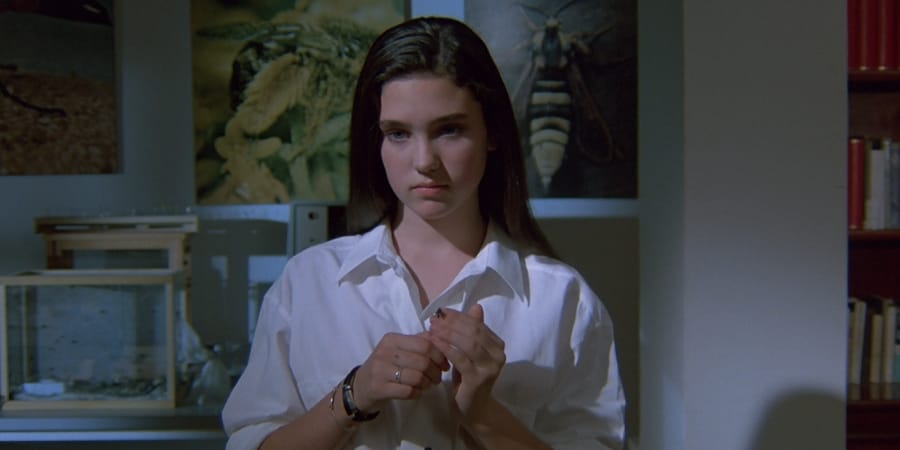
Phenomena
Director: Dario Argento
Release year: 1985
Like in Suspiria, a young woman arrives at a female-run school where students are being murdered by an unseen killer, but there are no witches in Zürich—instead we have a girl who has an unexpected telepathic connection with insects.
Jennifer Corvino, daughter of a famous actor, is sent to a Swiss boarding school for the summer. On her first night she sleepwalks and witnesses a student being murdered before being led by chimpanzee Inga to the house of her owner, forensic entomologist John McGregor. There are more murders, and Jennifer comes to realise she can use her growing psychic connection with insects to discover the bodies of victims, as well as protect herself from attackers.
Donald Pleasance plays the wheelchair-bound McGregor, who is trying to find out what happened to another student of his, Greta, who he suspects was also murdered. He has the chimpanzee trained as a nurse so he can live in his secluded home cum laboratory. Jennifer’s burgeoning power over insects is implied to be linked to her coming of age, and McGregor encourages her to use a Great Sarcophagus fly, whose larvae feed on dead bodies, to lead her to Greta.
It’s all completely mad, and the final fifteen minutes throws gore and weirdness at the story faster than makes any sense. People rave about this film, but I struggled with it. It’s a mash-up of everything that’s come before in his filmography—the first-person camerawork for a killer, an occasional heavy metal soundtrack, the magical powers of Suspiria, the whodunnit of his giallos, but the pacing is off, the acting is bland (until the ending), and the story borders on incoherent. And he’s said it’s one of his favourite creations. Hm!